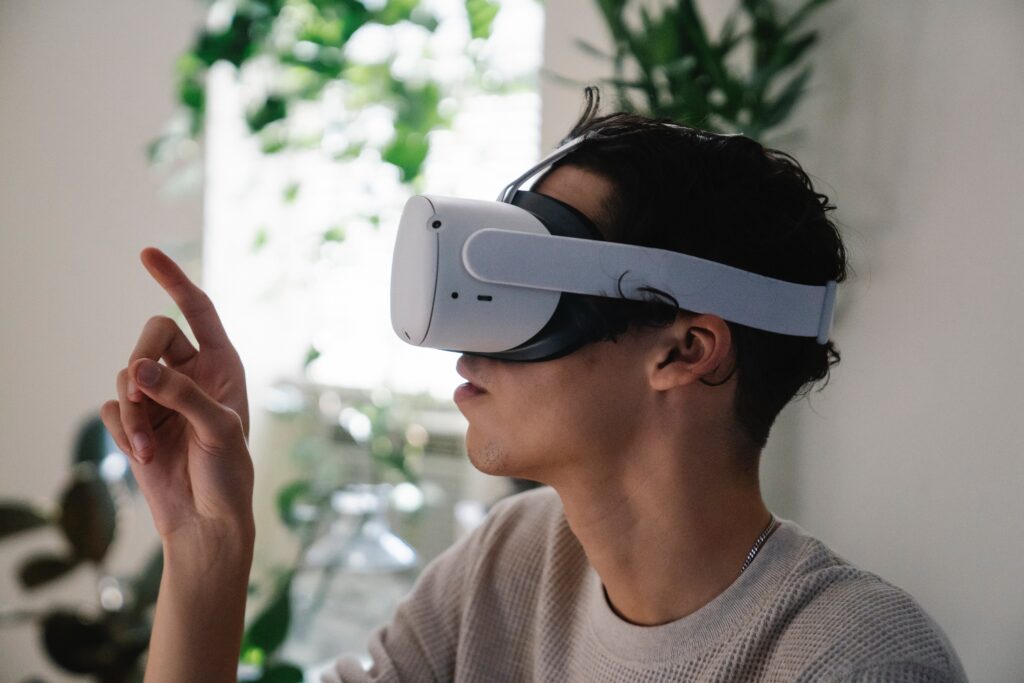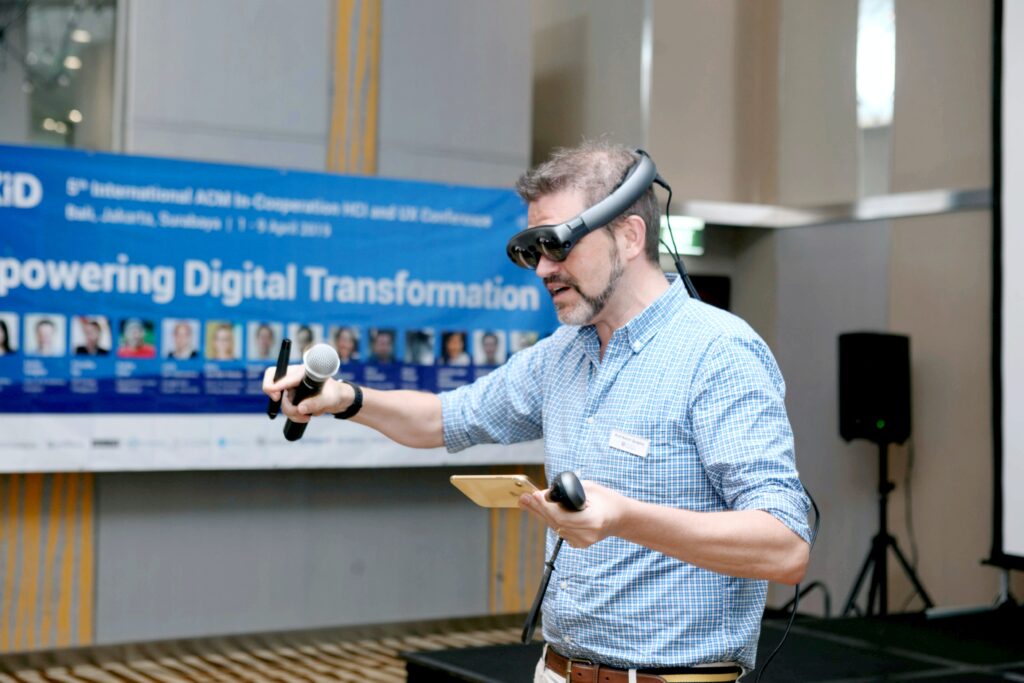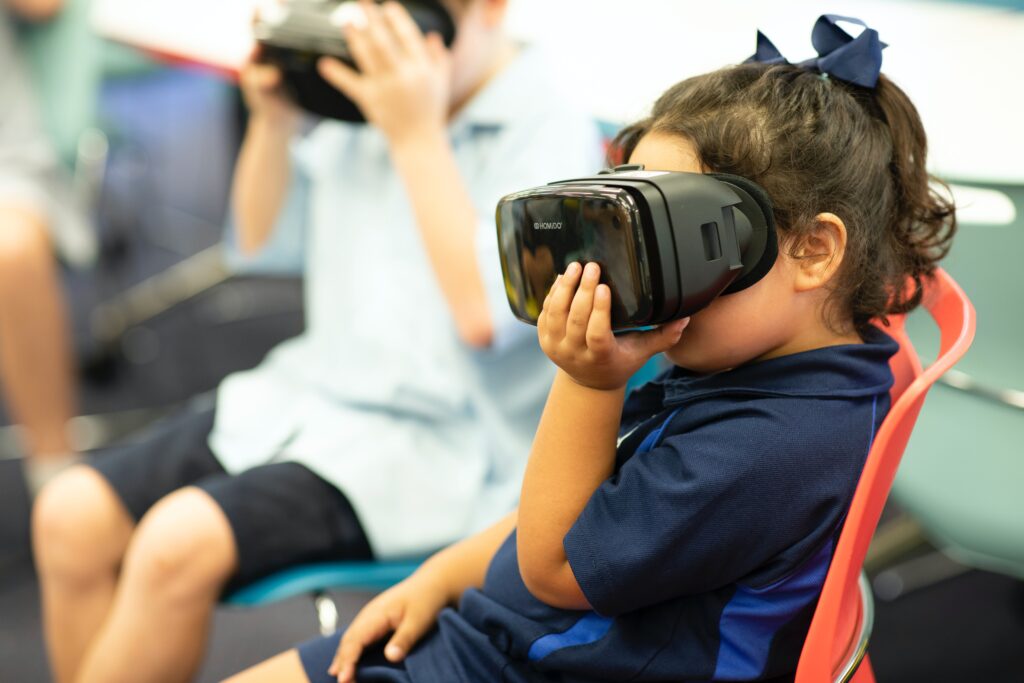Mixed Reality (MR) is not just about immersive experiences; it’s also a powerful tool for inclusivity. In a world that is becoming increasingly digital, MR offers innovative solutions to make virtual worlds accessible to all. This blog explores how MR fosters an immersive learning experience, the future of accessibility in MR, its key role in education, and its impact across various sectors.
Immersive Learning Experience

MR breaks down barriers by providing an inclusive learning environment. It allows individuals with diverse abilities to interact with digital content in a way that suits their needs. Whether it’s providing visual aids for the visually impaired or tactile feedback for those with hearing impairments, MR opens up new avenues for personalized and engaging education.
Some key points related to immersive learning experience using MR
- Personalized Learning Journeys: MR allows for personalized and adaptive learning experiences. Learners can engage with content in a way that suits their preferences and needs. For example, MR can offer interactive simulations, 3D visualizations, and real-time feedback, catering to various learning styles and abilities.
- Real-World Contextualization: MR brings learning content to life by contextualizing it in the real world. For instance, history lessons can transport students to historical sites, and science classes can explore complex concepts through interactive visualizations. This real-world integration enhances comprehension and retention.
- Collaborative Learning: MR encourages collaborative learning by enabling students to interact with virtual objects and each other in shared MR environments. Collaborative projects and group activities become more engaging and interactive, fostering teamwork and communication skills.
Future of Accessibility in MR

The future of accessibility in MR is bright. As technology advances, we can expect even more innovative solutions. Enhanced voice recognition, gesture-based interfaces, and haptic feedback will further improve accessibility, making MR more inclusive for everyone.
Also it promises continued innovation. Advancements in voice recognition, gesture interfaces, and haptic feedback will make MR experiences even more inclusive. As MR technology evolves, it holds the potential to redefine accessibility standards and create a digital world that is welcoming and accommodating to individuals of all abilities.
How MR Plays a Key Role in Education
In the realm of education, MR offers groundbreaking opportunities. It enables teachers to create immersive, interactive lessons that cater to various learning styles. Students can explore historical events, travel to distant planets, and engage with complex scientific concepts in a way that traditional teaching methods cannot match. MR also supports students with special needs, ensuring that education is accessible to all.
How MR is Impacting Different Sectors

MR’s influence extends beyond education. It has transformative potential in healthcare, where it aids in the rehabilitation of patients with disabilities and provides training simulations for medical professionals. In the workplace, MR enhances accessibility by offering assistive tools for employees with disabilities. Moreover, MR enriches the entertainment industry by creating inclusive gaming experiences that are enjoyable for everyone.
two points highlighting how Mixed Reality (MR) is impacting different sectors:
- Healthcare: MR is revolutionizing healthcare with applications like patient rehabilitation, medical training simulations, and surgical planning. Patients with disabilities benefit from MR-assisted therapies, while medical professionals enhance their skills through immersive training.
- Entertainment: In the entertainment industry, MR creates inclusive gaming experiences where players of diverse abilities can engage with virtual worlds. It’s making storytelling more immersive by seamlessly integrating digital elements into real-world environments, appealing to a broader audience.
Conclusion
Mixed Reality is a game-changer in making virtual worlds inclusive. Its immersive learning experiences, coupled with continuous advancements in accessibility features, promise a more inclusive future. In education and across various sectors, MR is breaking down barriers and ensuring that everyone, regardless of their abilities, can participate fully in the digital world. As MR technology evolves, it holds the potential to redefine the way we perceive accessibility and inclusivity in our society, making virtual worlds a welcoming place for all.
FAQs
1. What exactly is Mixed Reality (MR), and how does it differ from other digital technologies?
MR combines elements of both Augmented Reality (AR) and Virtual Reality (VR) to create immersive experiences where digital and physical worlds coexist. It differs from AR by offering more immersive interactions and from VR by retaining a connection to the real world.
2. How does MR make virtual worlds more inclusive for individuals with disabilities?
MR enhances inclusivity through features like voice recognition, gesture-based interfaces, and haptic feedback, catering to diverse abilities. It also enables educators and developers to create content that accommodates various learning styles and needs.
3. What are some examples of MR applications in education that promote inclusivity?
In education, MR can offer visually impaired students tactile feedback, provide interactive visual aids, and create immersive simulations that make complex concepts accessible. It caters to diverse learning needs and promotes a more engaging and inclusive learning experience.
4. How is MR being applied to assist individuals with disabilities in the workplace?
MR can provide assistive tools in the workplace, such as real-time language translation, speech-to-text, and customized interfaces for employees with disabilities. It fosters a more accessible and accommodating work environment.
5. What is the future outlook for accessibility in MR, and how can society leverage these advancements?
The future of accessibility in MR is promising, with ongoing advancements in technology. Society can harness these developments to ensure that digital experiences are truly inclusive for everyone, thus creating a more equitable and accessible digital world.

